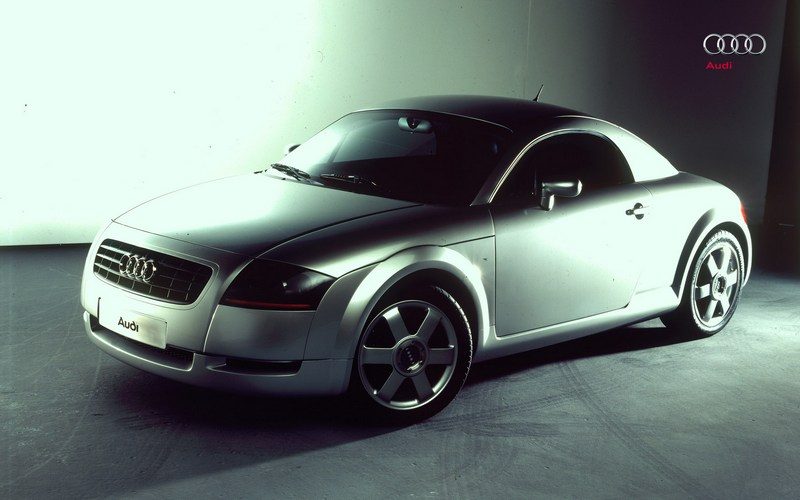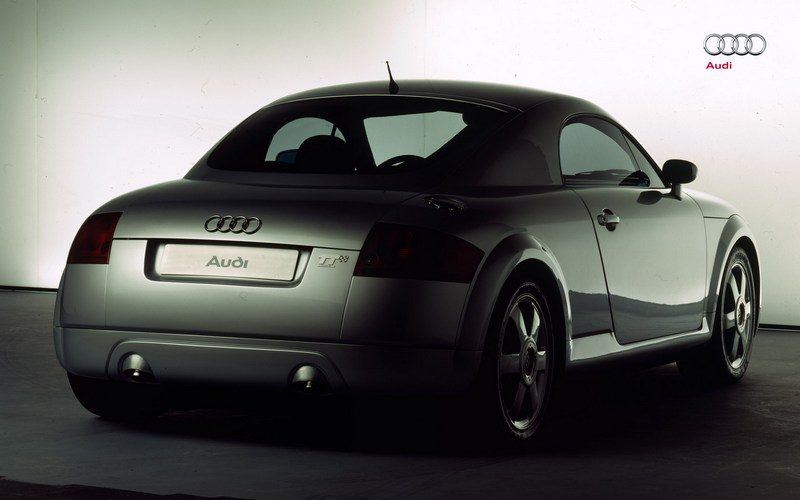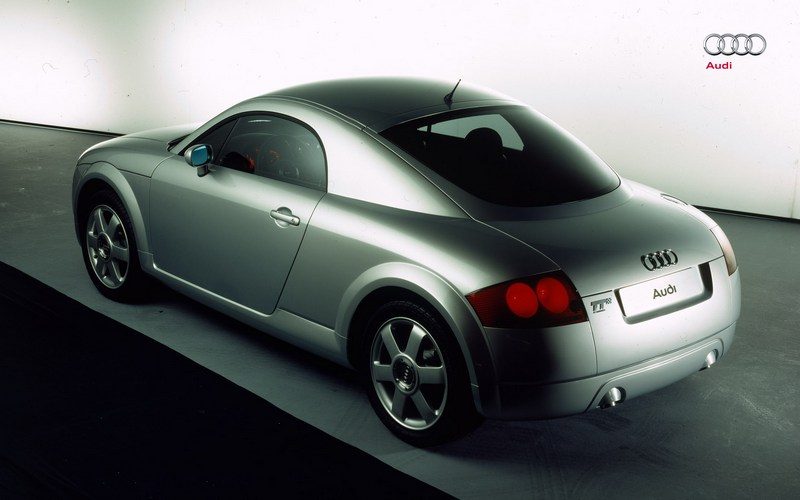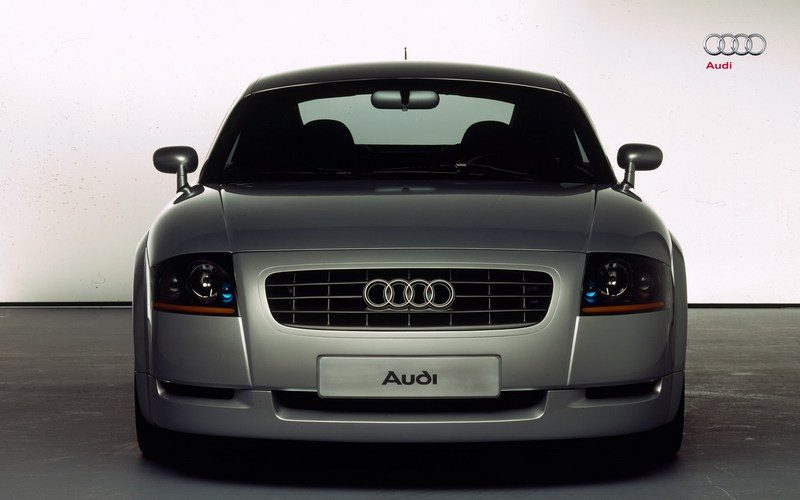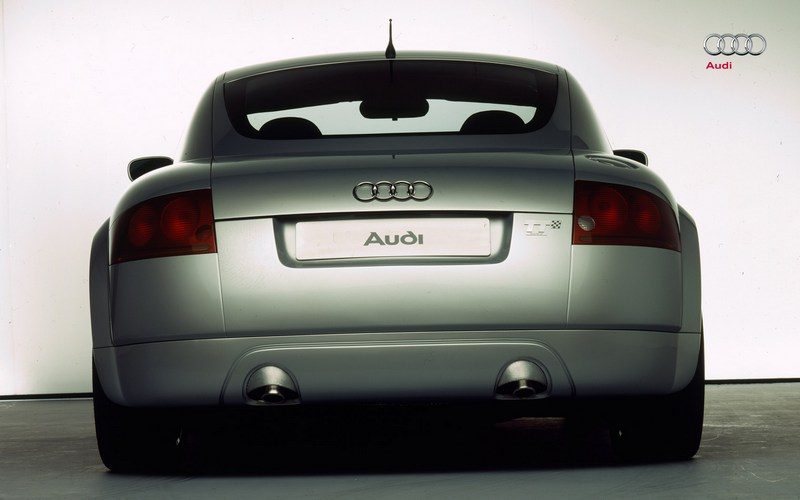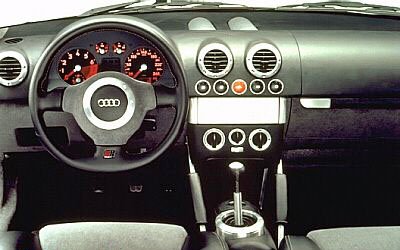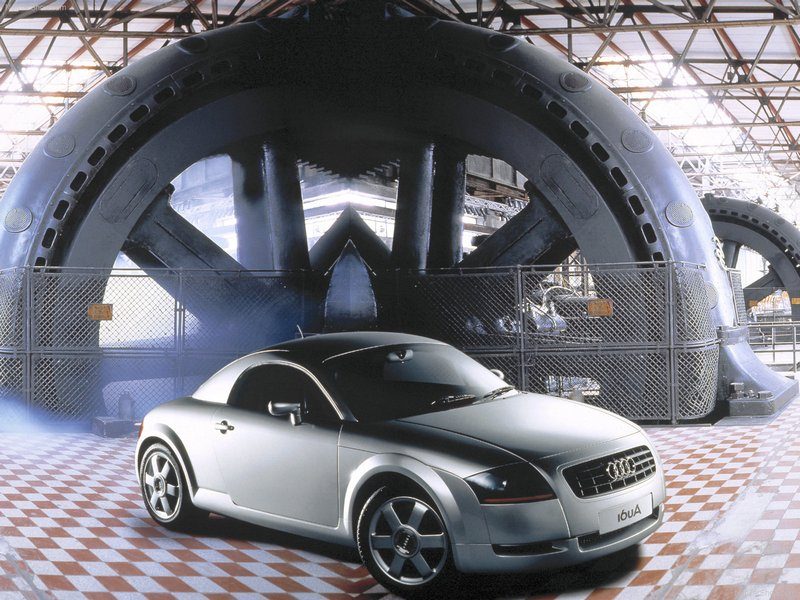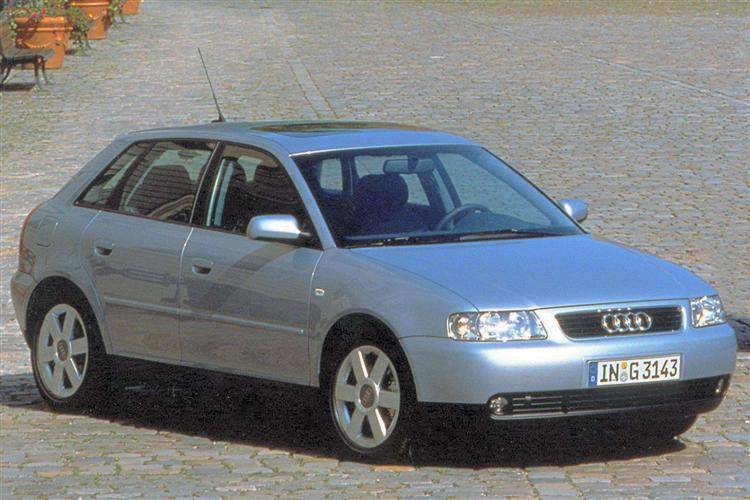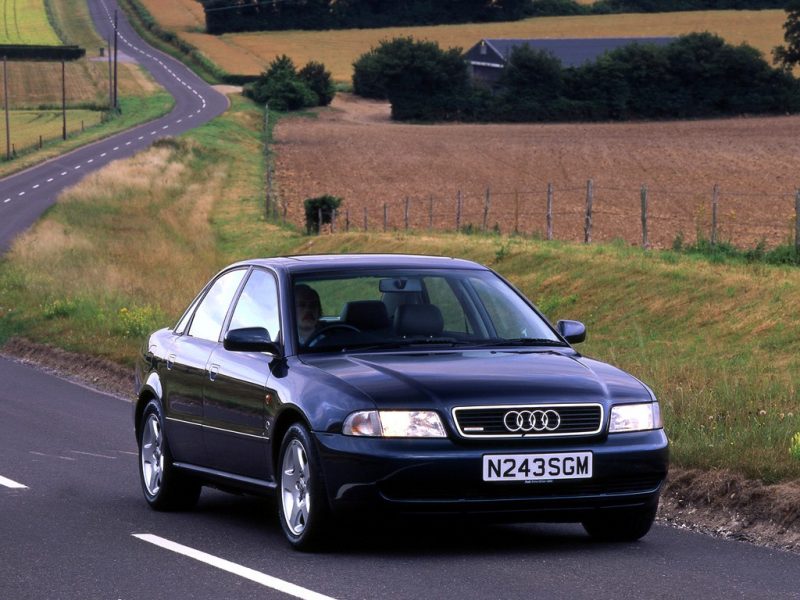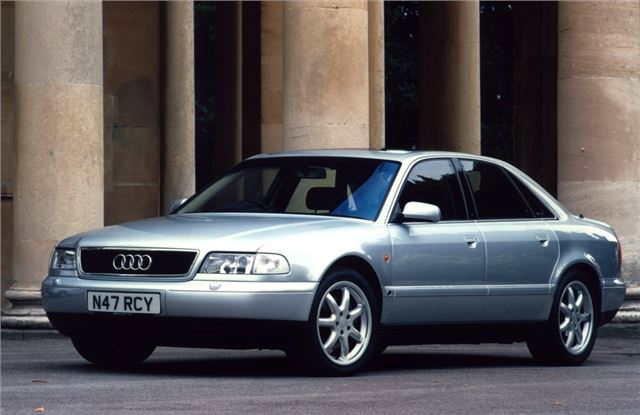The Audi TT is very much more than an unashamed piece of 1930’s nostalgia. Unveiled at the 1995 Frankfurt Motor Show, it assuredly incorporated over 60 years of German stylistic themes, yet remained wholly modern in conception.
The TT began life at the Volkswagen Audi Design Centre in California, the same facility that was responsible for VW’s Beetle-inspired concept 1.
There, in May 1994, German/American stylist, Freeman Thomas, began work on a series of sketches that drew swift and positive approval of his boss, J. Mays, head of Audi Design.
He in turn enlisted the support of the A4 project manager, Dr. Ulrich Hackenburg, and corporate R&D chief, Josef Paefgen. Work soon began in Germany on what the world now knows as the TTS roadster that was to be exhibited at the 1995 Frankfurt Motor Show.
“An enthusiasts’ car with great charisma,” was the way Audi’s chairman, Dr. Herbert Demel, described the coupe” design study presented at the 1995 Frankfurt International Motor Show.
Coupe Coup
But some two months into the project, VW Audi’s chairman, Ferdinand Piech, had a change of heart. He decided that because other manufacturers were working on open concept cars to display at the event, his company would opt instead for a coupe version.
Unlike similar vehicles, the TT was a particularly cost-conscious project and drew on components and expertise generated from existing models in the Audi range, as well as those under development.
It was based on a shortened platform for the projected front-wheel-drive A3 hatchback of 1996. This important building block was to be shared with new VW Golf and featured a transversely located engine, rather than Audi’s customary inline unit.
However, the TT used a 150 bhp 1.8 litre four, courtesy of the Audi A4 range. The company’s pioneering, and leech-like, Quattro four-wheel-drive system was employed.
The body incorporated aluminium doors, bonnet and boot lid and used technology developed for the acclaimed top-line A8 saloon.
Nostalgia
Nostalgic elements were also incorporated in the six-spooked wheels that echoed those used on Bugatti racing and sports cars of the inter-war years.
Romanian designer Romulus Rost was responsible for the interior and, like the exterior, the emphasis was on clean and simple themes that were highlighted by the use of aluminium and leather. This was a 2+2 seater with folding seats to permit access for children in the rear.
Completed in seven hectic months, the coupe was greeted with much acclaim at its Frankfurt debut, after which Audi announced that it would be putting the TT in production. This was underlined when the roadster was subsequently unveiled at the Tokyo show.
Wood, Jonathan (1997) Concept Cars, Paragon, ISBN 0-75252-084-9.


